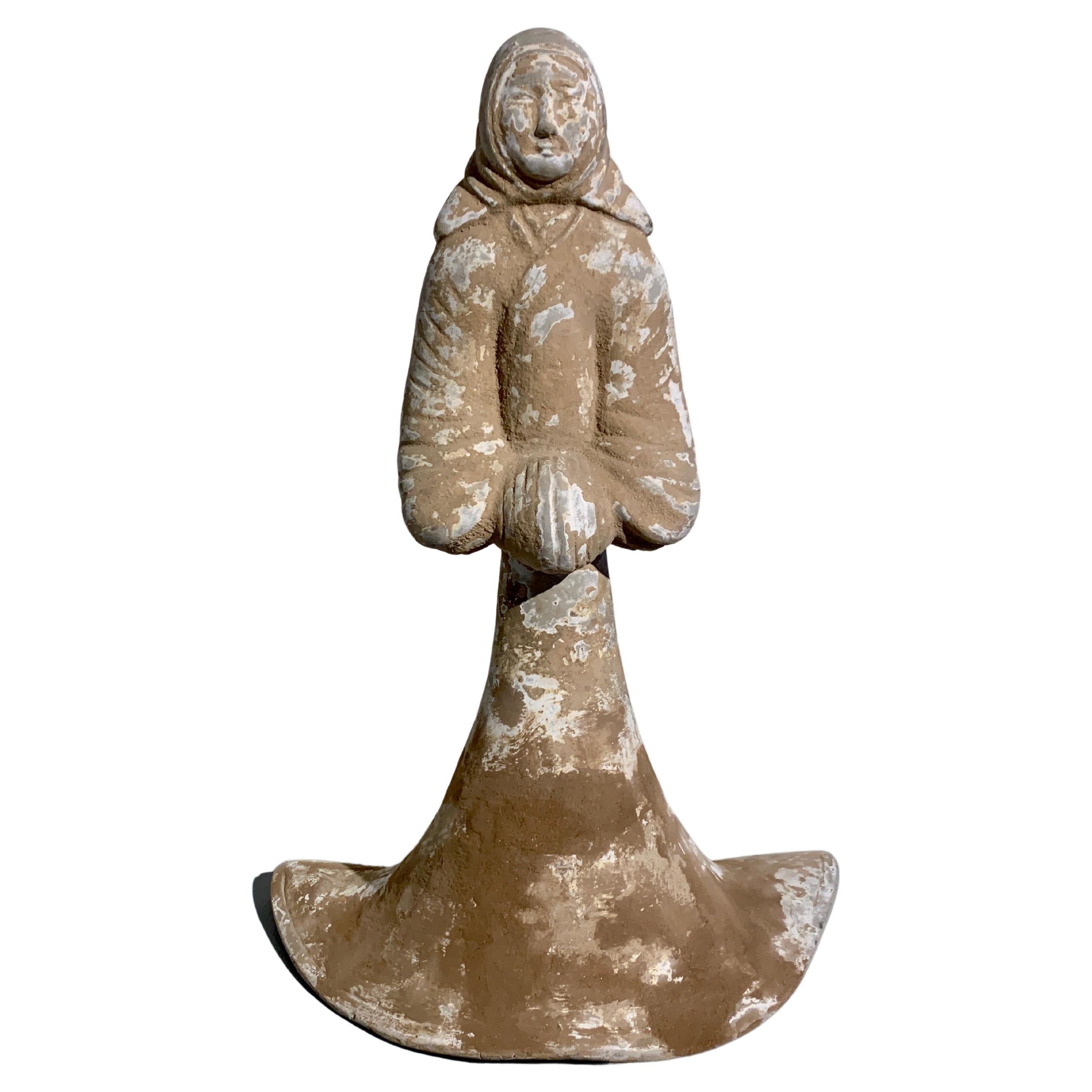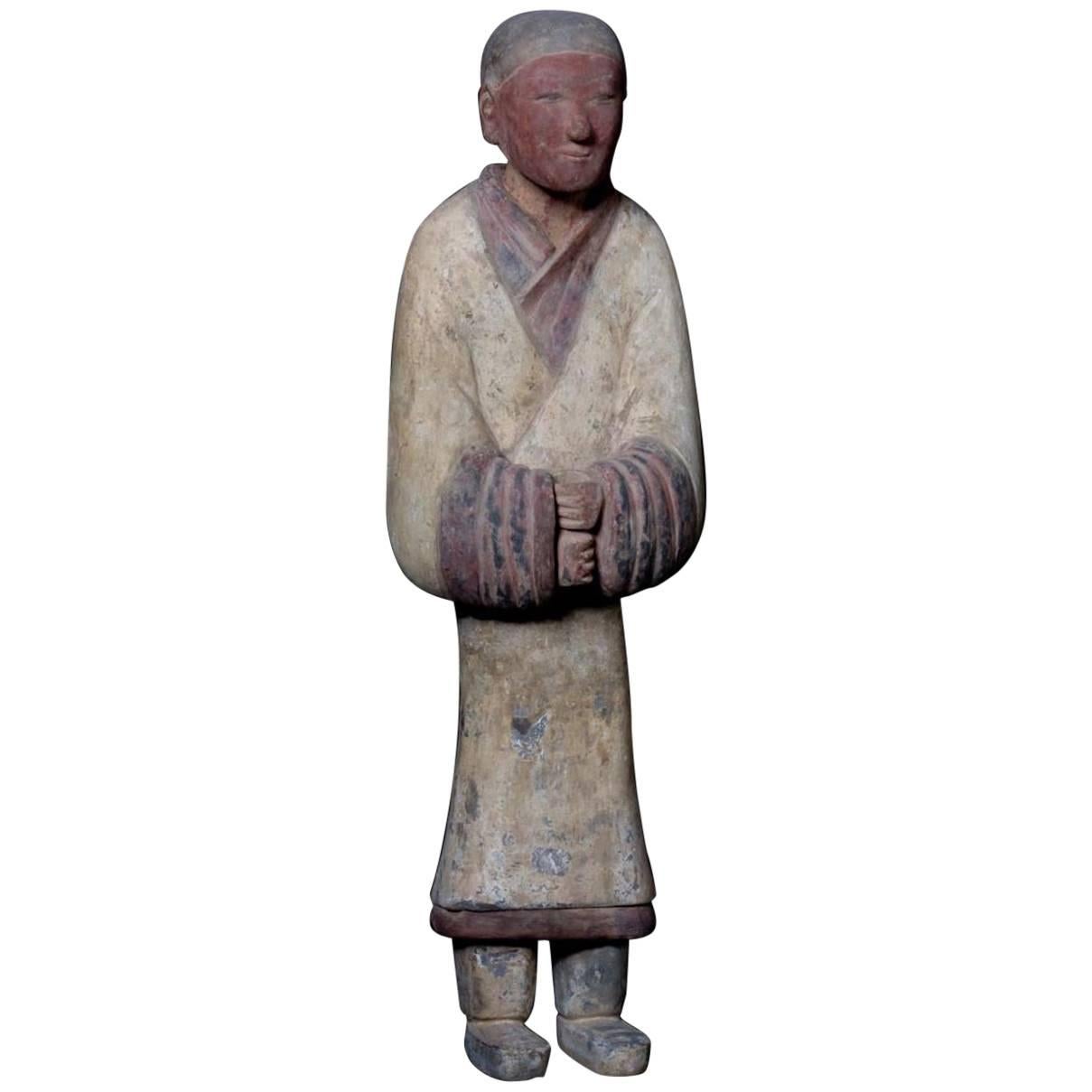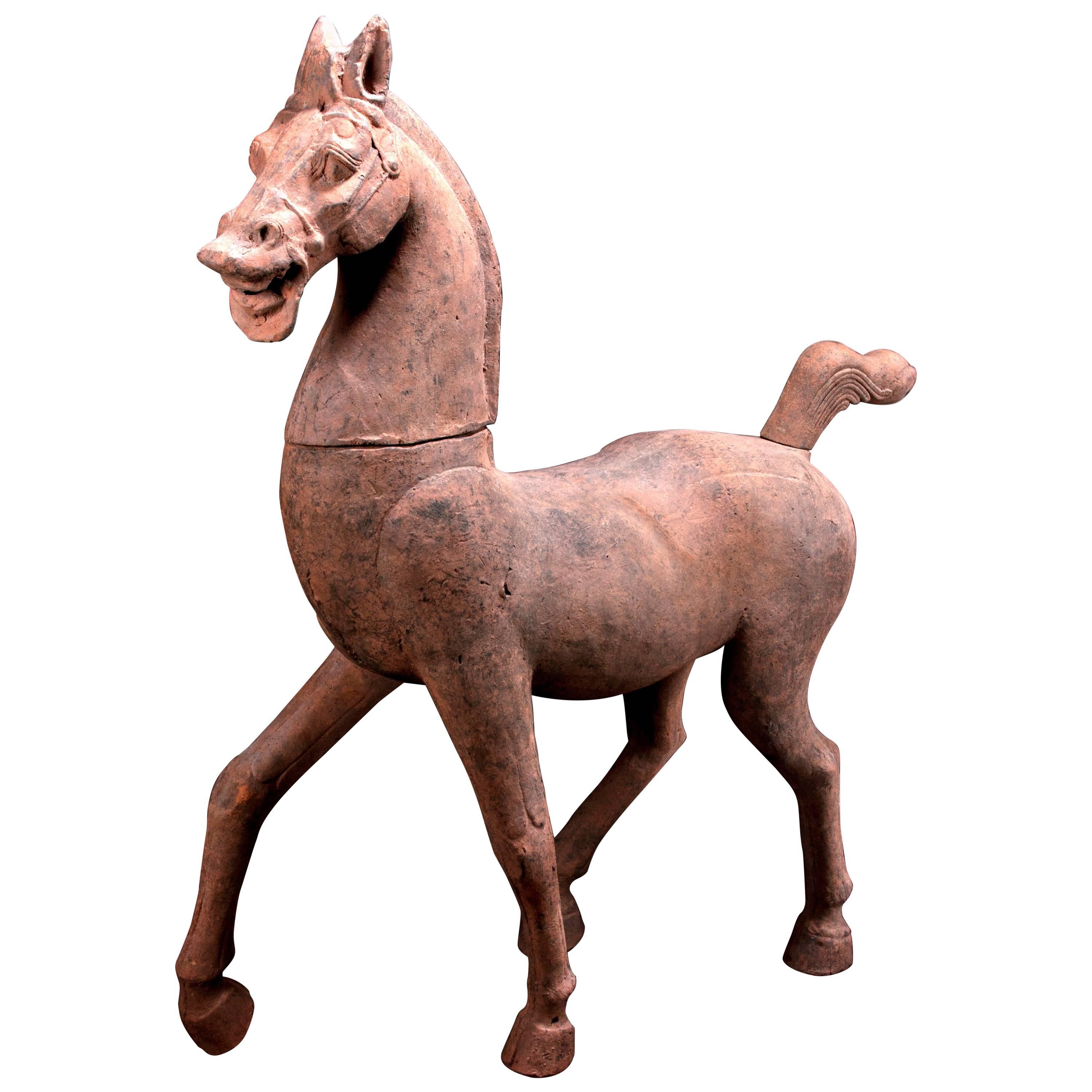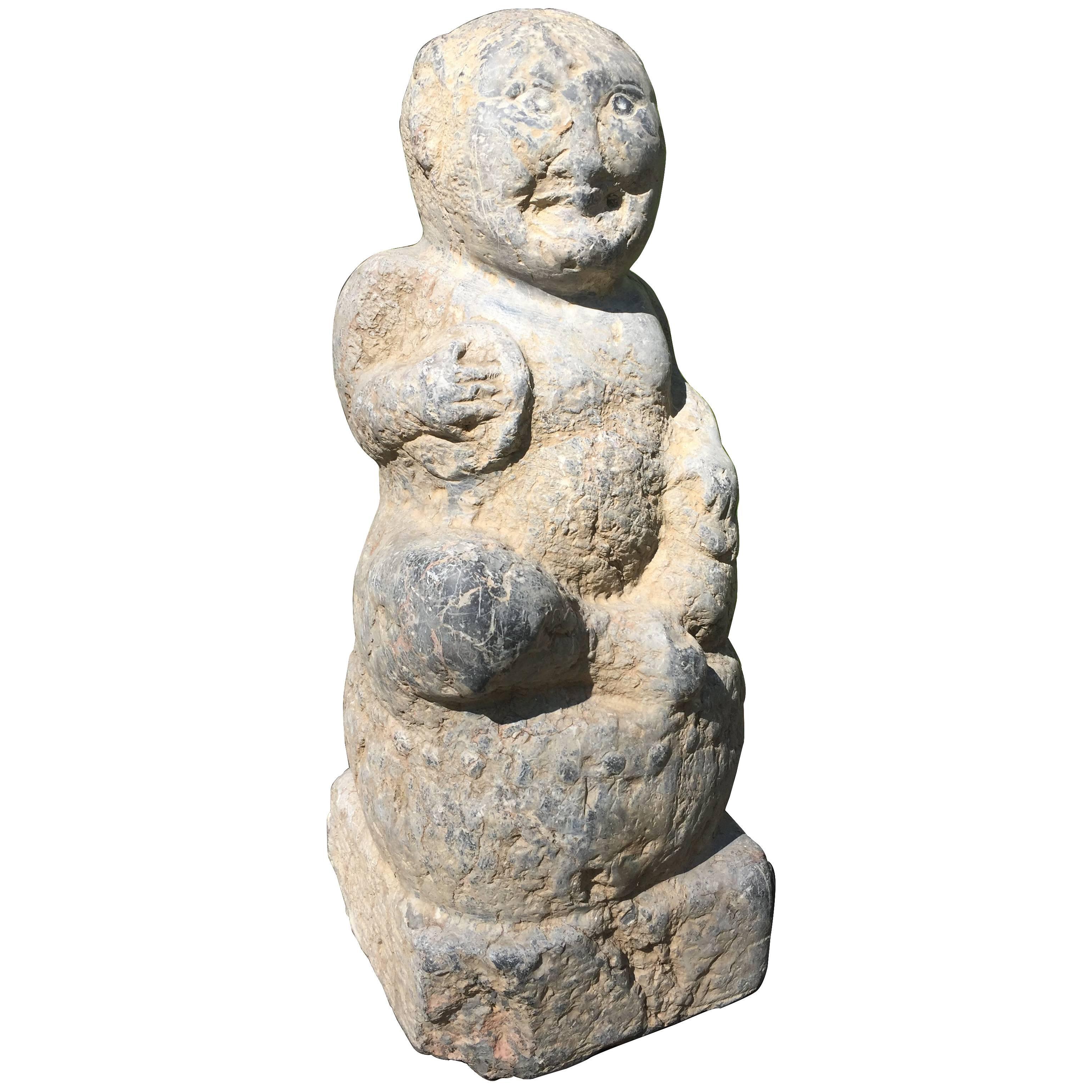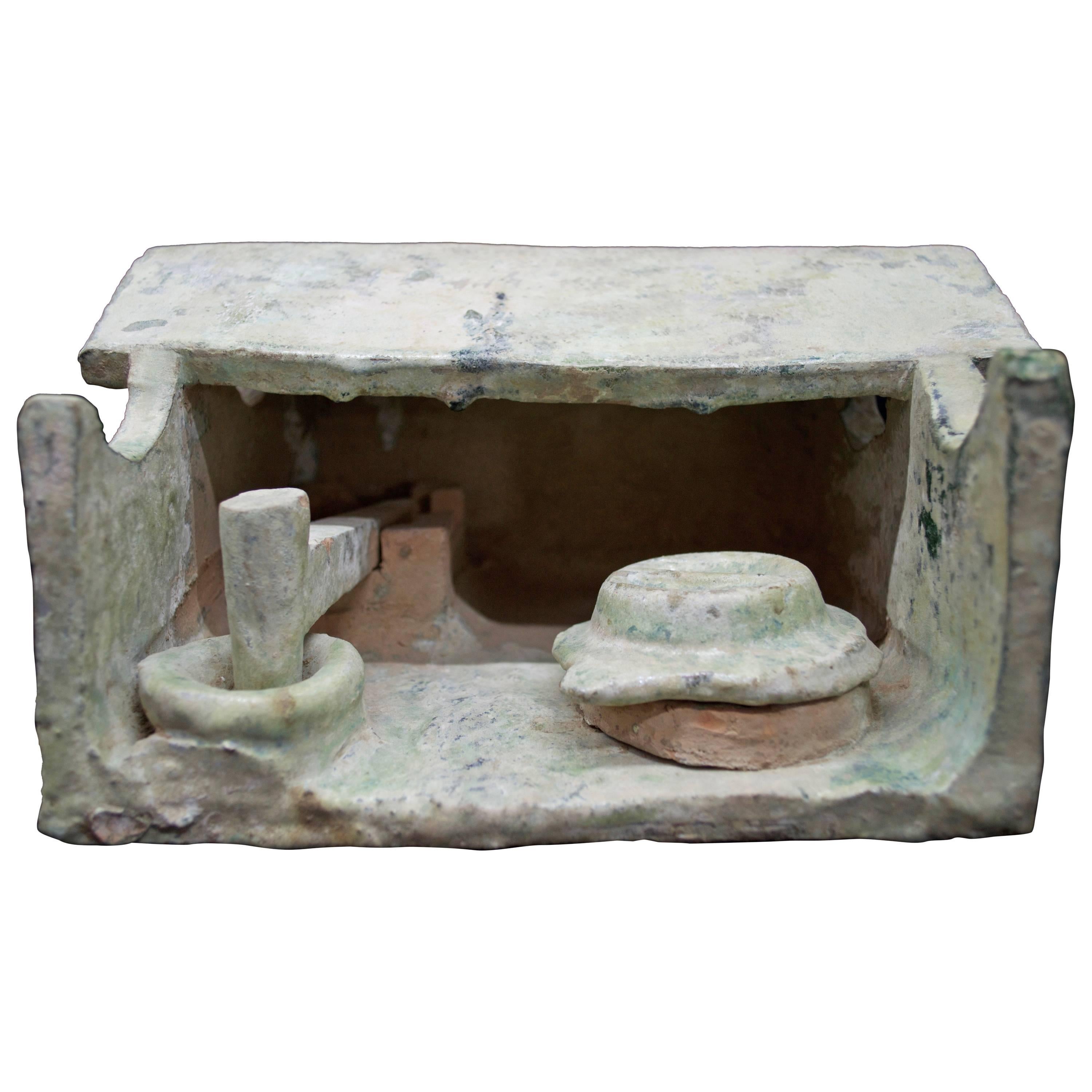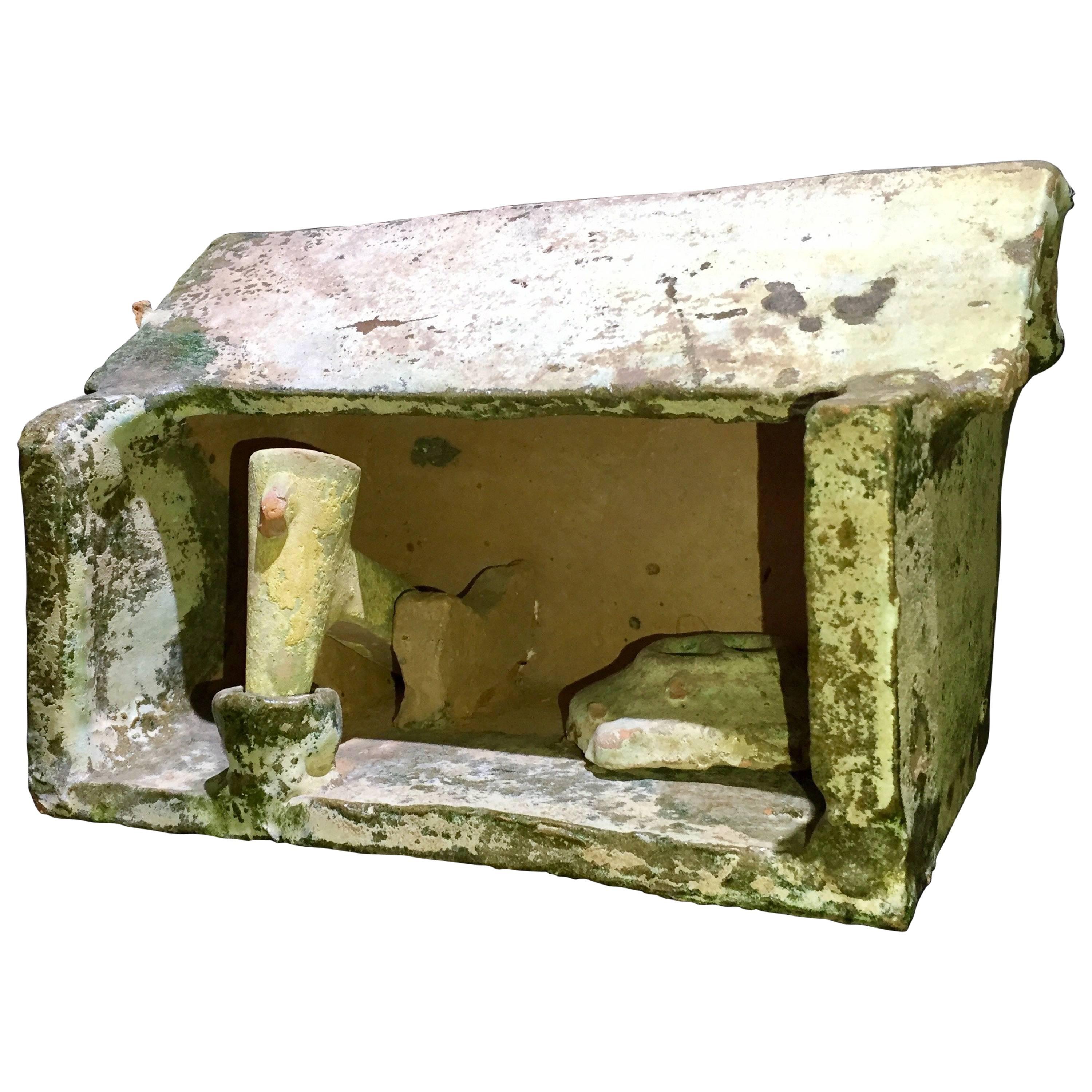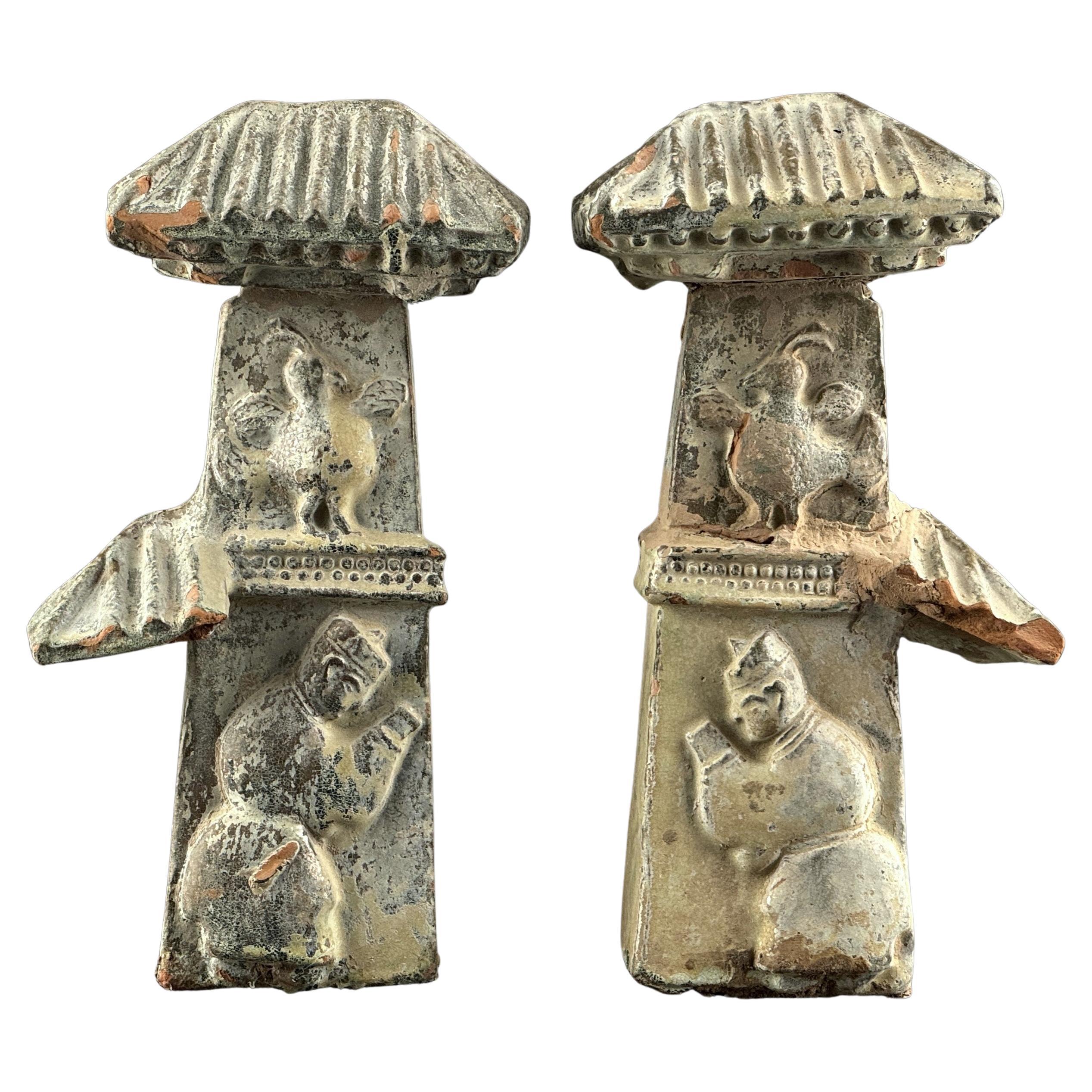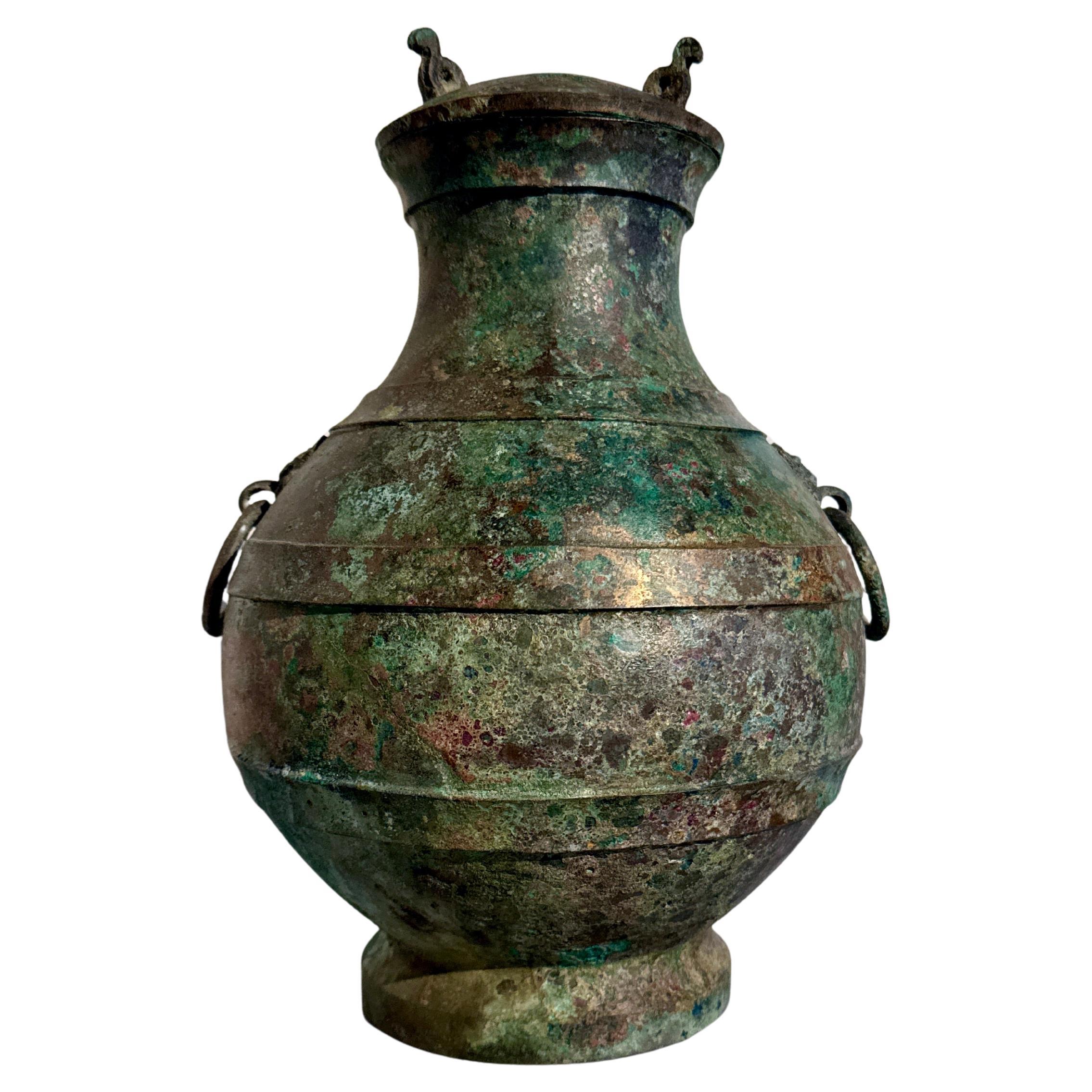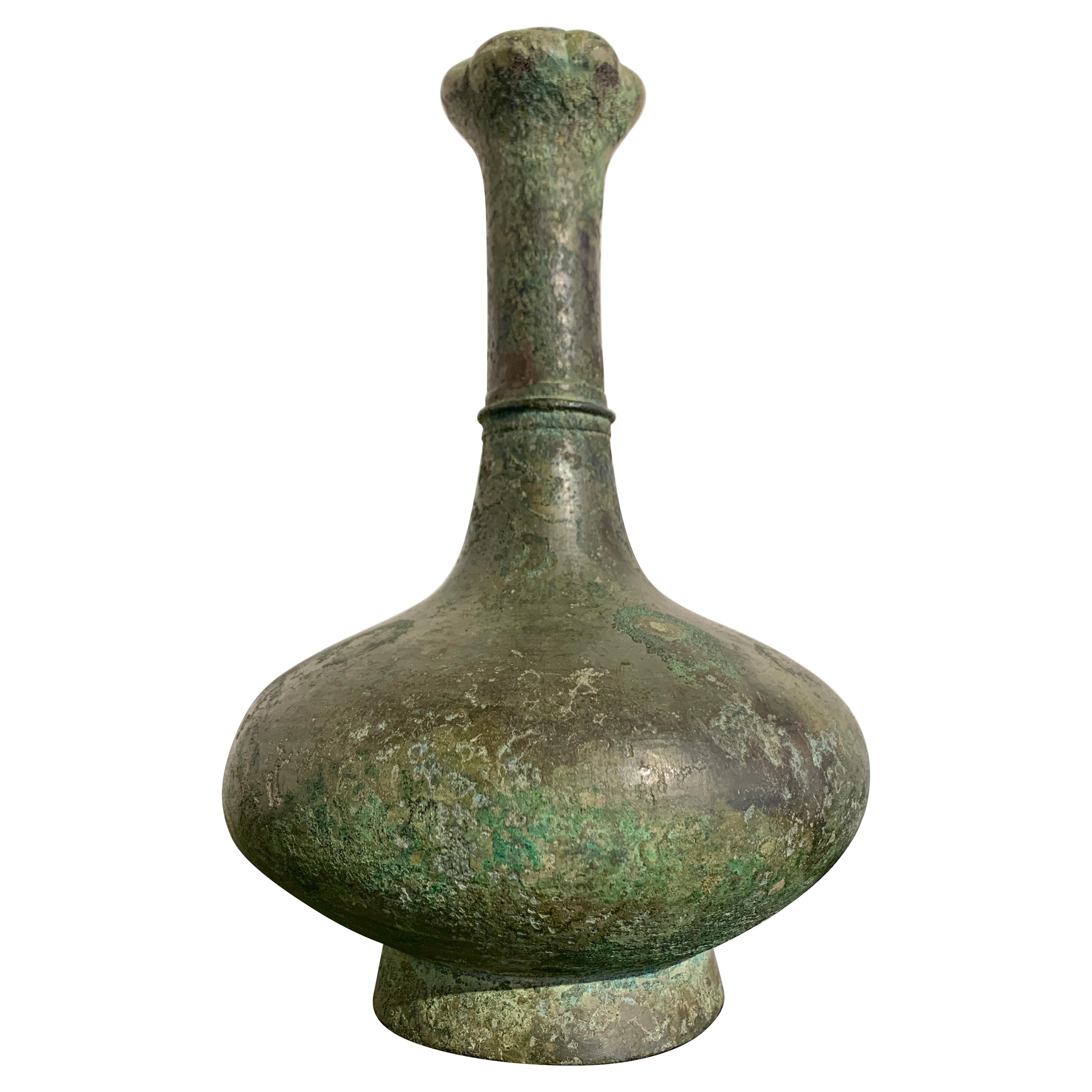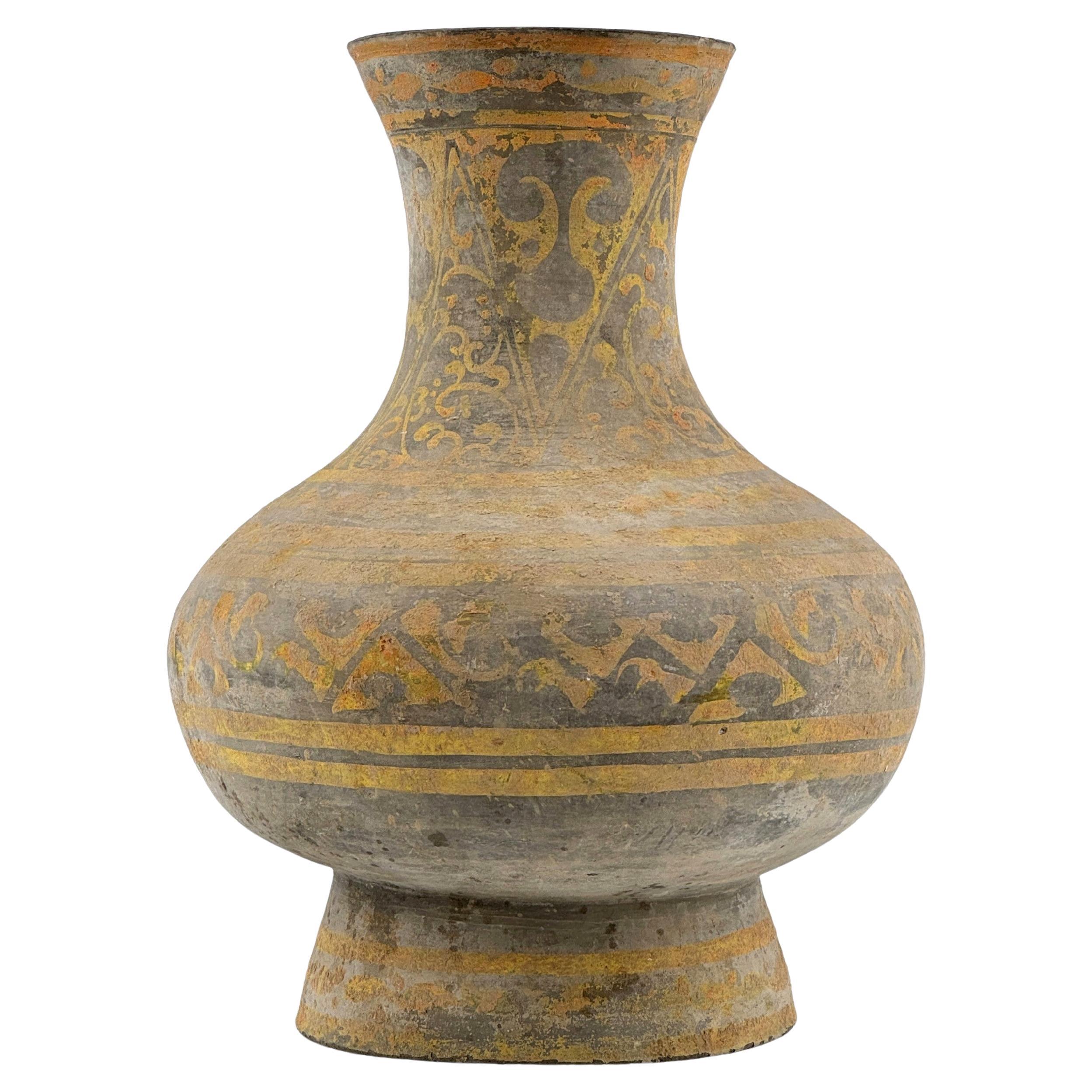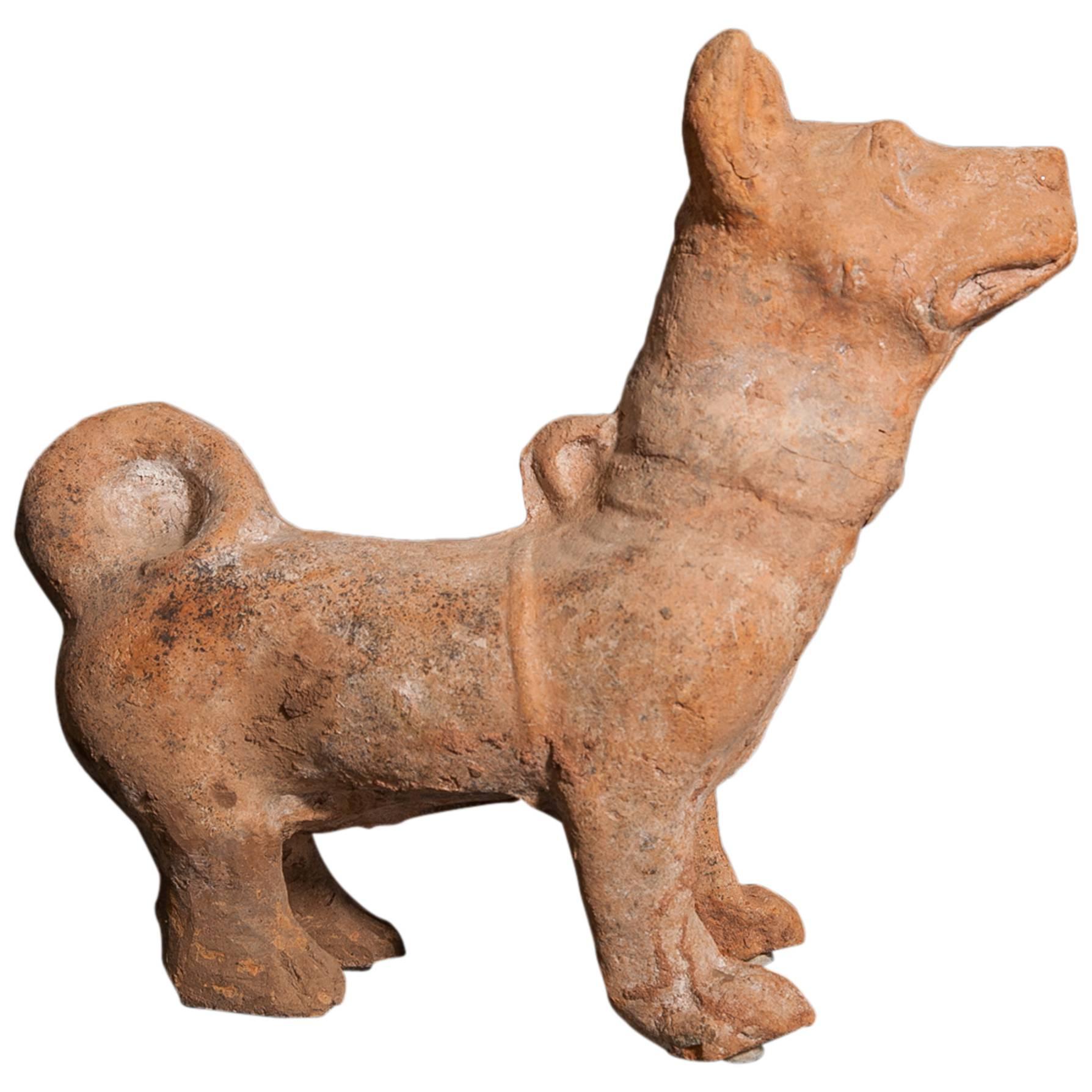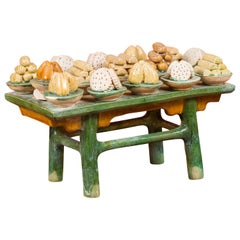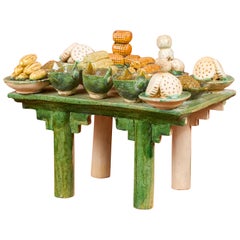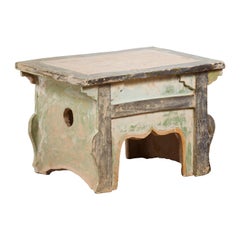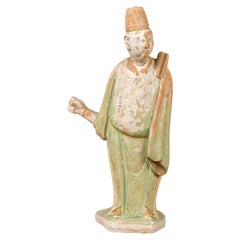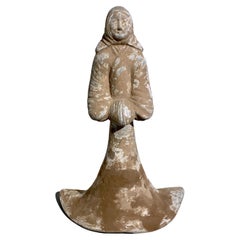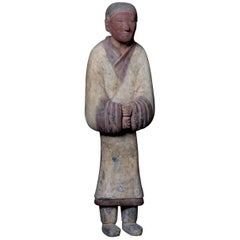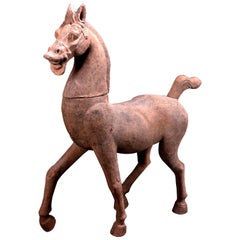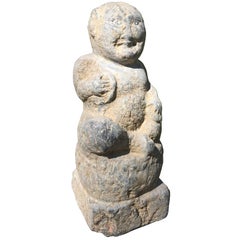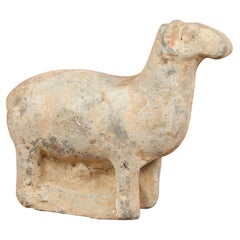
Chinese Petite Han Dynasty Terracotta Sheep Mingqi, circa 202 BC-200 AD
View Similar Items
Want more images or videos?
Request additional images or videos from the seller
1 of 13
Chinese Petite Han Dynasty Terracotta Sheep Mingqi, circa 202 BC-200 AD
About the Item
- Dimensions:Height: 5 in (12.7 cm)Width: 4 in (10.16 cm)Depth: 2 in (5.08 cm)
- Style:Han (Of the Period)
- Materials and Techniques:
- Place of Origin:
- Period:
- Date of Manufacture:circa 202 BC-200 AD
- Condition:Wear consistent with age and use. Age appropriate wear. Please look at the various photos available.
- Seller Location:Yonkers, NY
- Reference Number:Seller: YN3042 / FEA Home1stDibs: LU863919339651
About the Seller
5.0
Platinum Seller
Premium sellers with a 4.7+ rating and 24-hour response times
Established in 1968
1stDibs seller since 2009
1,132 sales on 1stDibs
Authenticity Guarantee
In the unlikely event there’s an issue with an item’s authenticity, contact us within 1 year for a full refund. DetailsMoney-Back Guarantee
If your item is not as described, is damaged in transit, or does not arrive, contact us within 7 days for a full refund. Details24-Hour Cancellation
You have a 24-hour grace period in which to reconsider your purchase, with no questions asked.Vetted Professional Sellers
Our world-class sellers must adhere to strict standards for service and quality, maintaining the integrity of our listings.Price-Match Guarantee
If you find that a seller listed the same item for a lower price elsewhere, we’ll match it.Trusted Global Delivery
Our best-in-class carrier network provides specialized shipping options worldwide, including custom delivery.More From This Seller
View AllMing Dynasty Glazed Terracotta Funeral Table Mingqi with Miniature Food Offering
Located in Yonkers, NY
A Ming dynasty period glazed terracotta funeral table mingqi from 15th-16th century with food in dishes. This rare Ming dynasty period glazed terracotta funeral table, dating from the 15th to 16th century, beautifully embodies the traditional Chinese practice of creating Mingqi—terracotta models meant to assist the deceased in the afterlife. This piece depicts a typical Chinese altar, adorned with green tempera glaze and meticulously crafted miniature foods, such as cakes and breads, representing offerings. The modeled and painted details give a glimpse into the customs of wealthy Chinese burials...
Category
Antique 16th Century Chinese Ming Antiquities
Materials
Terracotta
Ming Dynasty 15th-16th Century Glazed Terracotta Funeral Table with Food Mingqi
Located in Yonkers, NY
A Ming dynasty period glazed terracotta funeral table mingqi from 15th-16th century with food and drinks. Created during the Ming Dynasty, this glazed terracotta funeral table, known...
Category
Antique 16th Century Chinese Ming Antiquities
Materials
Terracotta
Petite Chinese Ming Dynasty Period Glazed Pedestal with Polychrome Finish
Located in Yonkers, NY
A petite Chinese Ming Dynasty glazed pedestal from the 15th or 16th century with polychrome finish. Crafted in China during the prestigious Ming Dynasty, this petite pedestal table...
Category
Antique 16th Century Chinese Ming Antiquities
Materials
Ceramic
Chinese Ming Dynasty Terracotta Courtsman Statuette with Original Polychromy
Located in Yonkers, NY
A Chinese Ming Dynasty painted terracotta courtsman figure with original polychromy. Attracting our eye with its weathered appearance and subtle polychromy, this Ming Dynasty terracotta courtsman figure exudes historical charm and elegance. This exquisite statuette, dating from the Chinese Ming Dynasty, features a courtsman resting on a hexagonal base, providing a stable and aesthetically pleasing foundation. Topped with a simple headdress and clothed in a long, flowing robe, the figure showcases a slight movement of the hips, creating a sense of liveliness and grace.
His right arm is extended in a gesture, while his left arm remains hidden under his clothes, adding an element of mystery and sophistication. The original polychromy, though weathered, adds a touch of vibrant color that enhances the figure's visual appeal and historical authenticity.
This Chinese courtsman figure will make for an exquisite decorative addition to any home. Its refined elegance and rich cultural heritage make it a versatile piece, perfect for placing on a commode, side table, or shelf. Whether in a living room, study, or entryway, this Ming Dynasty figure will bring a touch of ancient Chinese artistry and timeless beauty to any interior space.
With its harmonious blend of form and function, this painted terracotta courtsman figure celebrates the enduring appeal of Ming Dynasty art...
Category
Antique 17th Century Chinese Ming Sculptures and Carvings
Materials
Terracotta
Chinese Ming Dynasty Terracotta Court Official Statuette, Original Polychromy
Located in Yonkers, NY
A petite Chinese Ming dynasty green glazed terracotta court official figurine from the 15th or 16th century, with original polychromy. Attracting our eye with its vibrant polychromy,...
Category
Antique 16th Century Chinese Ming Sculptures and Carvings
Materials
Terracotta
Pair of 19th Century Chinese Hand-Carved Temple Corbels with Characters
Located in Yonkers, NY
A pair of 19th century Chinese hand-carved temple corbels featuring stylized characters. Each corbel showcases a great wood openwork carving featuring a...
Category
Antique 19th Century Chinese Antiquities
Materials
Wood
You May Also Like
Chinese Han Dynasty Standing Cowled Lady, Gray Pottery, 202 BC - 9 AD, China
Located in Austin, TX
A tall and dramatic Chinese high fired gray pottery model of a standing lady wearing a hood and a flared skirt, Western Han Dynasty (202 BCE - 9 CE), Shaanxi, China.
This striking ...
Category
Antique 15th Century and Earlier Chinese Han Antiquities
Materials
Earthenware, Pottery
Elegant Han Dynasty Terracotta Warrior - China '206 BC - 220 AD'
Located in San Pedro Garza Garcia, Nuevo Leon
Impressive terracotta warrior representing a banner bearer gripping a wooden staff with his hands (dematerialized through the ages); his gaze is ser...
Category
Antique 15th Century and Earlier Chinese Han Antiquities
Materials
Terracotta
Monumental Han Dynasty Terracotta Horse - TL Tested - China, '206 BC–220 AD'
Located in San Pedro Garza Garcia, Nuevo Leon
A massive pottery horse with separately made head and tail, standing on all fours and striding with its right hoof forward. Extended snout ends in parted lips showing teeth beneath i...
Category
Antique 15th Century and Earlier Chinese Han Antiquities
Materials
Terracotta
China Ancient Stone Entertainer, Han Dynasty 200 AD
Located in South Burlington, VT
China an ancient limestone figure of an Entertainer replete with hands holding tambourines and a top a drum, -for the afterlife- , Han dynasty 206 BC...
Category
Antique 15th Century and Earlier Chinese Han Sculptures and Carvings
Materials
Limestone
$12,000 Sale Price
20% Off
Eastern Han Dynasty Terracotta Barn Workshop, China '206BC - 220AD' Ex-Museum
Located in San Pedro Garza Garcia, Nuevo Leon
Slab pottery constructed barn workshop having a peaked roof – open walled form with a mechanical pounder and a large round covered storage container. Light blue-green mottled glazed surface with some iridescence patina to the glaze.
Condition: Intact, excellent condition, an unusual example.
Provenance: The Living Torah Museum, Brooklyn; ex. Sands of Time, 2002.
Sculptural effigies of domesticated animals were often interred in the tombs of nobility and elite members of the social hierarchy. Models like this one were made to represent everything from simple goat or pig pens to the most elaborate towers and palaces. Because very few ancient Chinese buildings have survived intact, these models, along with descriptions from ancient texts, give a good representation of what the buildings might have looked like.
This fantastic piece is accompanied by a Certificate of Authenticity.
Burial figurines of graceful dancers, mystical beasts, and everyday objects reveal both how people in early China approached death and how they lived. Since people viewed the afterlife as an extension of worldly life, these figurines, called mingqi, sometimes referred as “spirit utensils” or “vessels of ghosts” disclose details of routine existence and provide insights into belief systems over a thousand-year period. For the first time in Chinese history, we have images of rural and daily life during the Han in the form of contemporary...
Category
Antique 15th Century and Earlier Chinese Han Antiquities
Materials
Terracotta
Eastern Han Dynasty Terracotta Model of a Paper Mill , China '206BC - 220AD'
Located in San Pedro Garza Garcia, Nuevo Leon
Slab pottery constructed Model of a Paper Mill, in Green and Cream Color Glazed Terracotta having a peaked roof – open walled form with a mechanical pounder and a large round storage container. Light blue-green mottled glazed surface with some iridescence patina to the glaze. The Iridescence is a refraction of the layers on the glass that produces multicolor hues & metallic luster, and only develops after one thousand years of being buried in the ground. An unquestionable mark of antiquity, impossible to falsify.
Han Dynasty, dated 206 B.C-220 A.D.
Condition: Excellent, wear commensurate with age, an unusual example.
This fantastic piece is accompanied by a Certificate of Authenticity.
Sculptural effigies of domesticated animals were often interred in the tombs of nobility and elite members of the social hierarchy. Models like this one were made to represent everything from simple goat or pig pens to the most elaborate towers and palaces. Because very few ancient Chinese buildings have survived intact, these models, along with descriptions from ancient texts, give a good representation of what the buildings might have looked like.
Burial figurines of graceful dancers, mystical beasts, and everyday objects reveal both how people in early China approached death and how they lived. Since people viewed the afterlife as an extension of worldly life, these figurines, called mingqi, sometimes referred as “spirit utensils” or “vessels of ghosts” disclose details of routine existence and provide insights into belief systems over a thousand-year period. For the first time in Chinese history, we have images of rural and daily life during the Han in the form of contemporary records...
Category
Antique 15th Century and Earlier Chinese Han Antiquities
Materials
Terracotta
